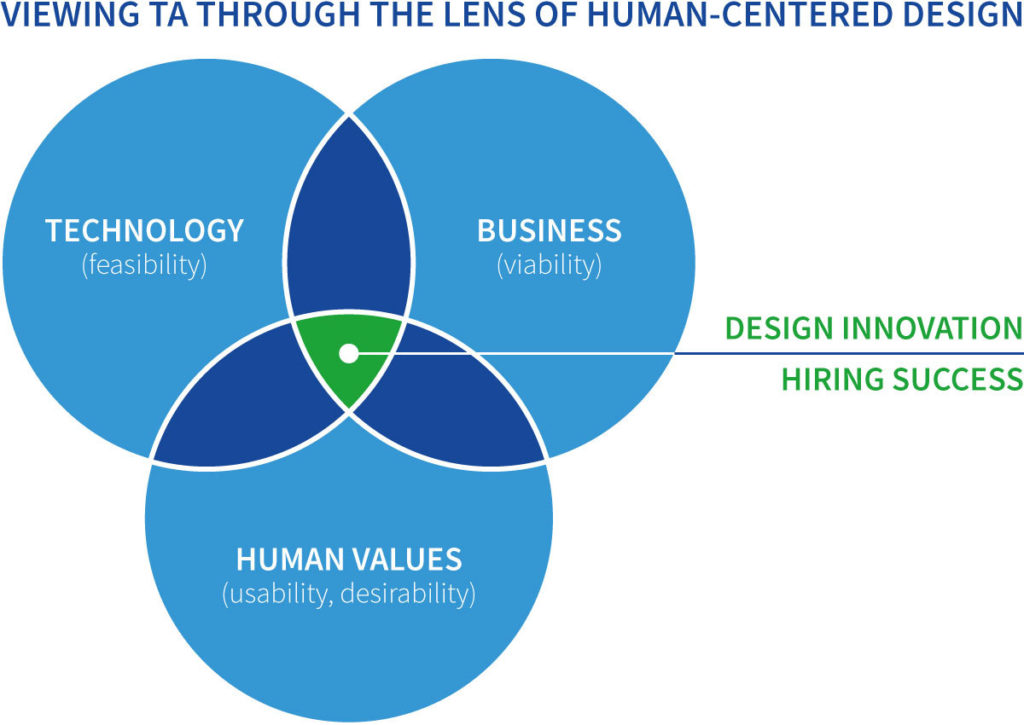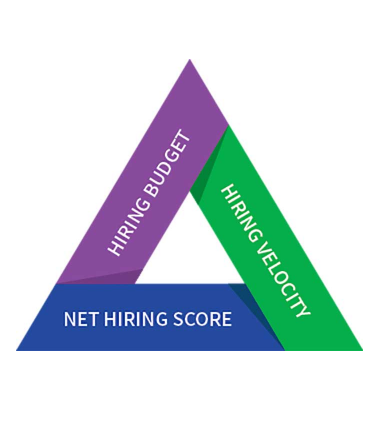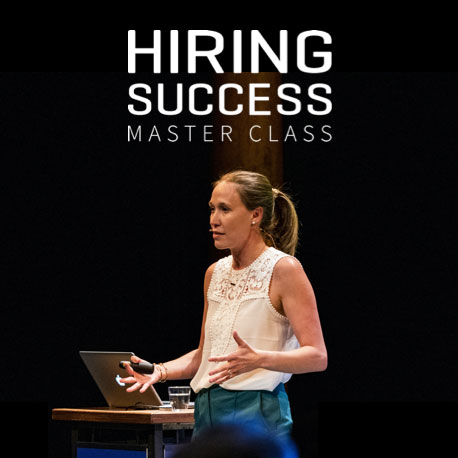In 2015, I upped sticks and moved from London to the other side of the world—Sydney, Australia—to help BCG Digital Ventures (BCGDV) build out their very first talent acquisition (TA) function for the Asia-Pacific ( APAC) region.
The cohort I worked with was small—just twenty-two people, in fact— but they were truly some of the smartest, most talented, and innovative people I have ever had the pleasure of working with. SmartRecruiters is the only other business that has been able to match this level of talent.
What made BCGDV unique was that it was part innovation lab, part incubator, and part venture capital. What made it truly unique were the ventures we were building as a global organization. The backbone of these ventures was the innovation cohort, which was primarily made up of strategic designers—or SD’s for short.
In a nutshell, SD’s are product-, UX-, and research-oriented problem solvers. They live and breathe the principles of human-centered design (HCD)—a methodology that fascinates me and has a lot to offer those working in the field of talent acquisition.
What is human-centered design?
According to London-based UX designer Miklos Philips: “Sometimes called ‘participatory design,’ human-centered design focuses on people’s everyday thinking, emotions, and behavior. It is a creative approach to problem-solving that involves the end-user from the very beginning and places them at the center of the digital design process.”
When you stop and think about it, that’s not so different from the way that talent acquisition approaches the problem of finding and hiring skilled workers.
Over the last several years, recruitment has evolved from being a transactional, back office function into talent acquisition— a strategic, client-facing function. And in my experience—which has spanned across talent acquisition, HR tech, and now TA tech—the most strategic people working (and arguably successful) in the TA space are those that are applying HCD methodologies to each and every aspect of the profession. Product, user/customer experience, process, and outcomes.
TA teams evaluating their technology and processes with a HCD lens were two-a-penny (or a dime a dozen for my American friends) when I first arrived in Australia five years ago, but I’m excited to see more and more businesses surfacing that have run or attended HCD workshops with outside consultancies before reaching out to SmartRecruiters.
As a professional, nothing makes me happier than when I have these encounters because it means we are able to form a partnership with a business that understands the impact that technology and process can have on your hiring strategy—and consequently business as a whole—when it’s informed by the principles of HCD.

Let’s revisit the definition from above, which states that HCD “focuses on people’s everyday thinking, emotions, and behavior. It is a creative approach to problem-solving that involves the end-user from the very beginning…” Swap out “HCD” for “TA” and “problem-solving” for “hiring” and tell me it doesn’t make perfect sense.
This includes every touch point, from the first time a candidate finds your brand and interacts with it, to their six month job anniversary and beyond. With enough time and dedication you can truly uncover areas of your hiring process that other businesses haven’t even thought of yet. In the process you’ll create an experience that’s seamless and beneficial, not only for candidates, but also recruiters, hiring managers, and other important stakeholders.
Using the ideas that are central to HCD is a great way to assess the current state of your TA function and to create a roadmap for the future. If I can be completely honest, I find this to be one of the most rewarding aspects of my job. But, while it can be a lot of fun, you have to have the right team, mindset, and collective approach to absolutely nail it.
Here are some tried and true tips I’ve learned along the way.
1. Break out the whiteboard, post-its, and dry erase markers
Oftentimes, I used to peer into the meeting rooms where the SD teams would meet. I’d gaze at their huge whiteboards, and god knows how many different colors of post-it notes and dry erase markers, and wonder what in the hell was going on. I was also a bit jealous once or twice as I thought they were having arts and crafts time for adults and didn’t bother to invite me.
Anyway, after they’d all gone home for the day, I used to sneak in and take a look at the huge walls covered in notes and realize the detail that was involved in mapping out that even the smallest journey of a product or service they were ideating on for a venture. Now, I would love nothing more than to do this with every TA/HR team that I meet. It’s the perfect way for everyone to evaluate, strategize, transform, and optimize any process that’s being created or reviewed.
Pro tip: Apps like WallSync make this easier to do than ever!
2. Think about talent acquisition or recruitment as a customer-facing function like sales or marketing
Many companies today work tirelessly to perfect their customer experience. But how many do the same with regard to the candidate experience? Qualified candidates suffer no lack of job opportunities. In many respects, they’re similar to prospective customers with buying power and plenty of options. These consumers aren’t just looking for a product or job, they’re searching for a delightful experience.
And in the same way that companies that provide stellar customer experiences will prevail over those that don’t, companies that provide stellar candidate experiences will do the same.
When you look at the hiring journey, specifically the candidate experience, through the lens of HCD, you might be surprised how many bottlenecks and hiccups can come up. For example, take the candidate application experience. What’s actually involved when someone decides they’d like to work for your company? There’s a lot more at work than simply applying online or emailing HR. That’s just the tip of the iceberg. Leave no stone unturned when you assess what it’s like for candidates to apply for a job at your company. For example:
- Where can they find your brand online?
- Is it easy to interact with your brand on a mobile device?
- How easy is it to search for your careers page?
- Once on the careers page, how easy is it for them to search and filter jobs appropriate to them?
- Once they’ve found and clicked on the desired job is the view of this fully-mobile optimized?
- Does the candidate have to create and log in with a password? In particular, this creates high levels of candidate drop off. Have you heard the story about the $300m fix from a no registration UX change?
- When they are ready to apply, are there easy-apply options like “Apply with SEEK, LinkedIn or Indeed”
- When selecting which social profile to apply with, does this parse all their information across so there is no doubling up on having to rewrite information?
- What are the screening questions you have proposed? Does the candidate get auto-responses and reasons for rejection if they are turned down?
- If, for whatever reason, the candidate isn’t selected, do you ask to keep their resume on file or join a talent community in the event that there are open positions in the future that match their qualifications?
- Once applied do they get a confirmation email thanking them for the application and inviting them again to join your talent community, follow your social media profiles, and encourage them to share other roles you’re hiring for with their network? If the application process is a great experience, believe me they will share jobs.
- Do you update candidates as to the status of their application? For example, if it’s currently being reviewed or not and when they can expect to hear back from you. If you decided to reject an application, do you communicate that to provide a sense of closure? Does your process and technology allow you to do that automatically but with a truly personalized and human touch?
There’s so much to consider! And in the same way that companies that provide stellar customer experiences will prevail over those that don’t, companies that provide stellar candidate experiences will do the same. Want to see how your candidate application experience stacks up against the rest of your industry, region and companies of similar size? You can request your Candidate Application Experience Scorecard here.
3. Test your process in the market, get feedback, and tweak
While you might think you’ve come up with a “Disneyland” hiring experience process that is mind-blowingly amazing—unfortunately, that’s no guarantee that it is. Take it out into the market and test it on real people who are applying for real jobs and don’t be afraid to say to these candidates, “We’re trying out a new process and would really appreciate your feedback so we can tweak it if we need to.”
But be forthcoming about the whole process, communicate why it’s different from before, and clearly state what you are looking for in terms of feedback. People will be much more open to helping if you are upfront, transparent, and genuine in your desire to create a better experience.
Additionally, solicit feedback from the people you’ve just hired. If they’ve made the decision to accept your job offer, it stands to reason that they will be invested in the success of your company and will take the opportunity to provide constructive feedback seriously.
4. Get others involved in what you are doing to ideate and innovate the process together
Some of the best vendor evaluation cycles don’t just involve TA, HR, IT, and procurement and finance. They also involve hiring managers who are the true champions of the hiring process. If you can, find a couple of hiring managers and bring them into your whiteboard sessions, workshops, evaluation processes, and vendor demos. Give them an opportunity to help you shape the process around them, talk through their ideas, as well as their paint points.
There are many aspects of the hiring process that hiring managers might not be aware of, such as mobile ATS functionality and automation. If they were, and realized how much easier these things would make their lives, they’d probably insist on having them. Look at this as your opportunity to be their champion for once by giving them options. It’s important to never make assumptions and to always involve relevant stakeholders so that you can really nail your TA strategy down to a tee.
5. Don’t be afraid to be different from other companies around you
There are way too many sheep and not enough early adopters. Be BOLD (if anyone gives you a hard time, send ‘em my way). Always look at what your competitors are doing and always look at how you can out smart them with good old T&P—technology and process.

How can you increase your Hiring Velocity while maintaining an incredible hiring experience? What can you do to bring in the best possible talent and boost your Net Hiring Score while bringing down hiring costs down through smart investments? It’s absolutely possible to achieve these things, but it requires an approach to TA that might be too new-fangled for some. That’s okay. Innovate and look towards the future!
Pro tip: If you need any help with stakeholder alignment and change management, check out this section of The Definitive Guide to Hiring Success.
6. Finally, when you are happy with your outlined process, stick with it and shout about it too
Okay, let’s assume you have ideated, innovated, road tested, tweaked and implemented a brand spanking new process that you’re proud of. Why not take it a step further and post it front and center on your careers page?

For example, you could say something like, “When you interview with us here at XYZ company, you can expect the following from the interview process (insert more details here). It’s our mission to provide our candidates with the best possible experience, and we hope that you’ll gain the following as a result (insert more details here).
Now you can take these guideline steps and apply them to other processes within your talent or HR function (like an application process, interview, hiring, and on-boarding) and hugely affect the way in which you attract, engage and hire going forward.
And if all else fails, you’ll have a lovely new collection of post-it notes and dry erase markers for adult arts and crafts time.




 Enroll in the Master Class & earn 6 SHRM credits
Enroll in the Master Class & earn 6 SHRM credits